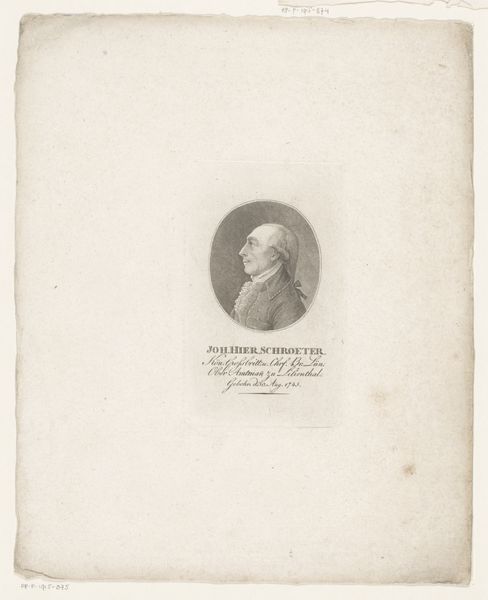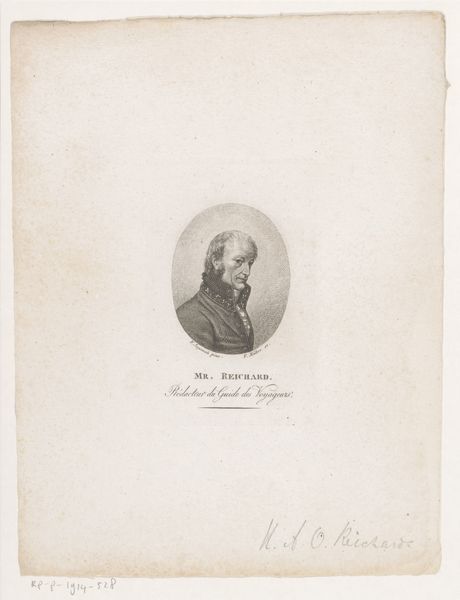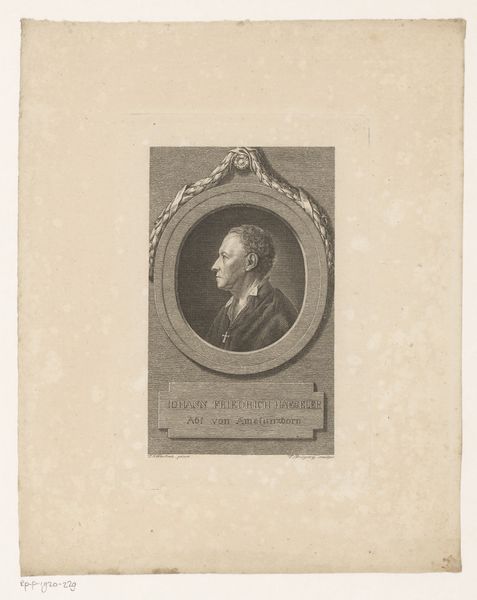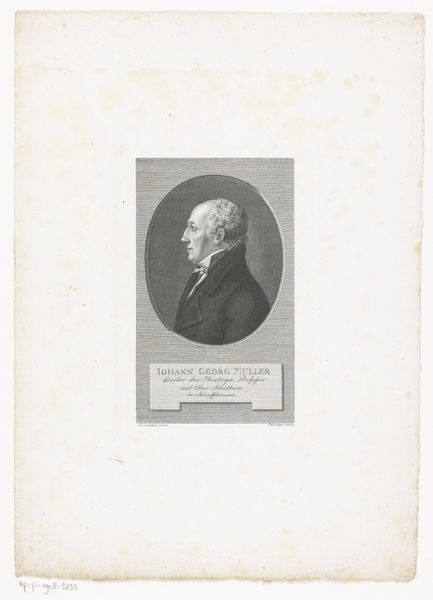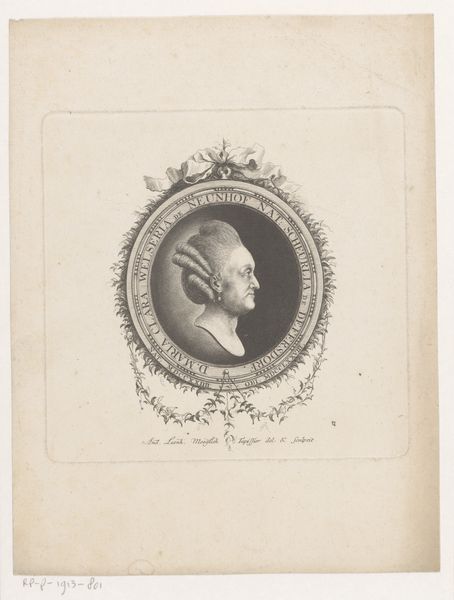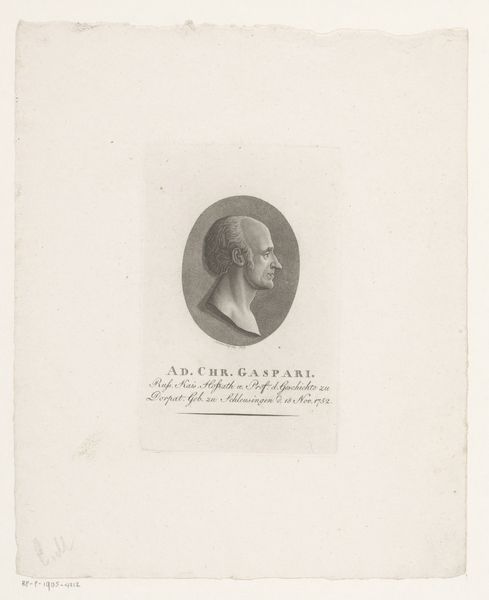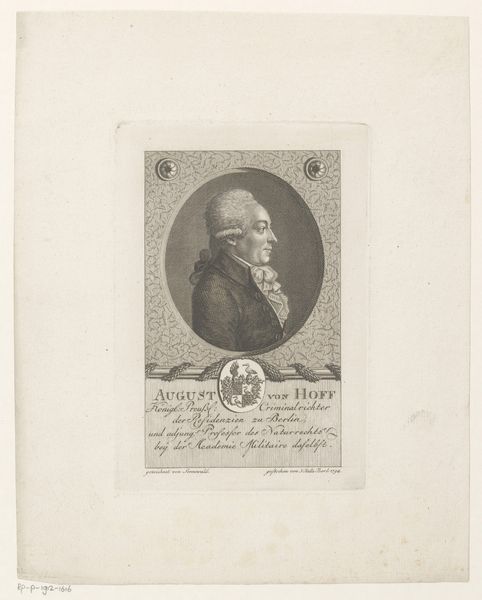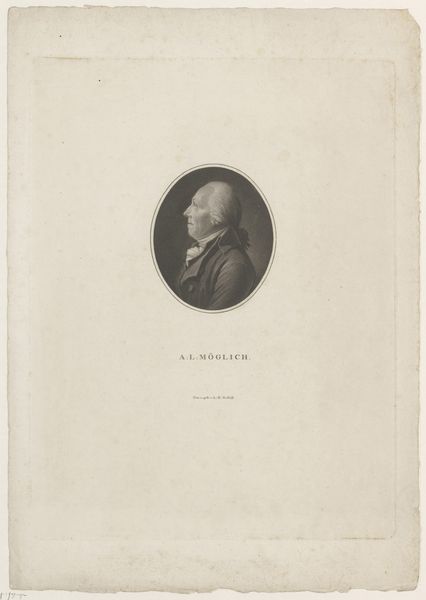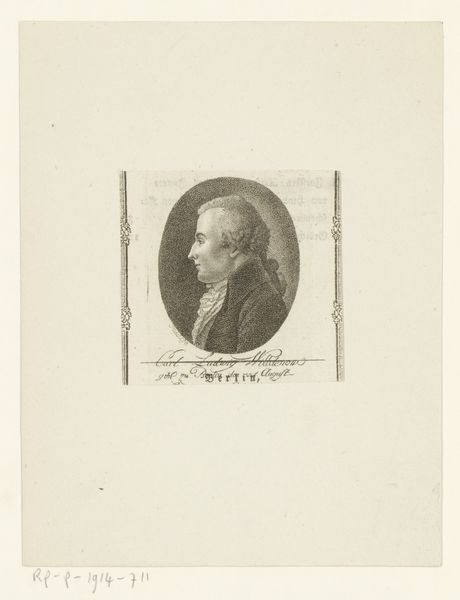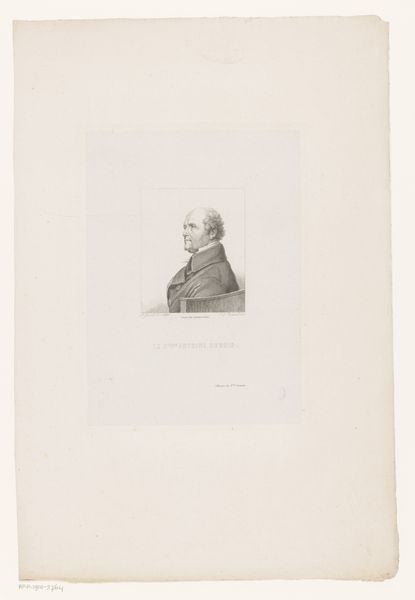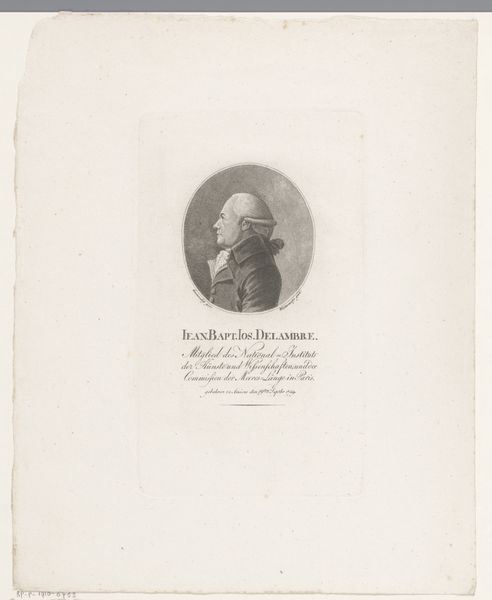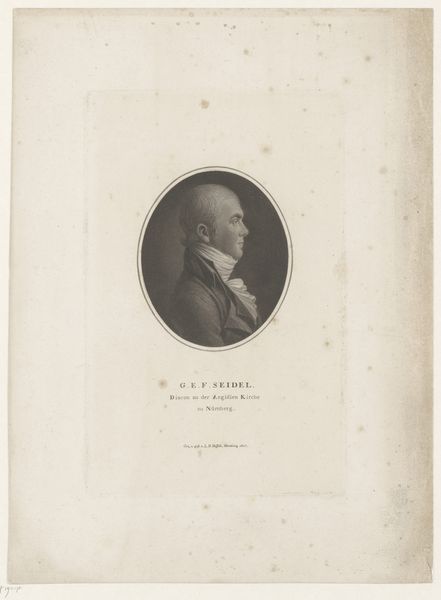
engraving
#
portrait
#
neoclacissism
#
academic-art
#
engraving
Dimensions: height 132 mm, width 82 mm
Copyright: Rijks Museum: Open Domain
Johann Christian Ernst Müller created this portrait of Heinrich Ludewig Manger using a technique called etching. This involves coating a metal plate with a waxy, protective layer, drawing through it with a needle to expose the metal, and then submerging the plate in acid. The acid bites into the exposed lines, creating grooves that hold ink. The resulting print captures a delicate, almost ephemeral quality. Note the fine, closely-spaced lines creating subtle gradations of tone, modeling Manger's face and the folds of his clothing. This labor-intensive process, requiring both technical skill and artistic vision, allowed for the relatively easy reproduction of images, contributing to the spread of knowledge and ideas in the 18th and 19th centuries. Etching democratized portraiture, making it more accessible beyond the elite circles who could afford painted portraits. It's a reminder that the materials and methods used to create art are never neutral; they always carry social and cultural significance.
Comments
No comments
Be the first to comment and join the conversation on the ultimate creative platform.
